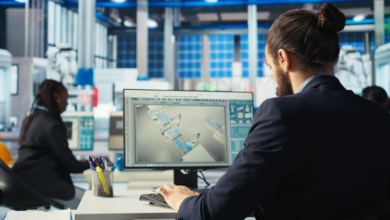Mutf_In: Nj_Flex_Cap_Tv2jh1

Mutf_In: Nj_Flex_Cap_Tv2jh1 exemplifies a significant leap in flexible cap technology. Its modular design enhances adaptability, making it suitable for various applications. Industries such as automotive and food packaging stand to benefit from its efficiency and reliability. This innovation not only promises cost savings but also addresses environmental concerns. As the market evolves, the implications of this technology could reshape user experiences in unexpected ways. What lies ahead for flexible design?
Key Features of Nj_Flex_Cap_Tv2jh1
One of the standout aspects of Nj_Flex_Cap_Tv2jh1 is its adaptability, which allows it to cater to a wide range of user needs.
Its design specifications include a modular structure that enhances versatility, while its performance metrics demonstrate high efficiency and reliability.
This combination ensures that users can tailor the technology to their specific applications, providing them with the freedom to innovate and optimize their experiences.
Benefits of Flexible Cap Technology
The implementation of flexible cap technology offers numerous advantages that enhance both functionality and user experience.
This innovation provides cost efficiency by reducing material waste and production costs. Additionally, design versatility allows for creative applications across various products, catering to diverse consumer needs.
As a result, users benefit from enhanced usability while enjoying aesthetically pleasing and adaptable solutions in their everyday lives.
Potential Applications in Various Industries
Flexible cap technology presents a myriad of potential applications across various industries, revolutionizing how products are designed and utilized.
In automotive manufacturing, these caps can enhance safety and ease of use, while in food packaging, they ensure freshness and convenience.
The Future of Flexible Design and Innovation
As industries evolve, the future of design and innovation increasingly hinges on adaptability and user-centric solutions.
Emphasizing sustainable design, organizations are compelled to explore innovative solutions that meet diverse consumer needs while minimizing environmental impact.
This flexibility fosters creativity, enabling designers to respond swiftly to changing market demands, ultimately paving the way for a more resilient and dynamic approach to product development and user experience.
Conclusion
In conclusion, the Nj_Flex_Cap_Tv2jh1 exemplifies how innovative technology can align perfectly with evolving market demands. Just as a flexible cap adapts effortlessly to different containers, this advancement mirrors the adaptability required in today's industries. By merging efficiency with environmental consciousness, it not only revolutionizes product design but also coincidentally sparks a new era of sustainable practices. As industries embrace this transformative solution, the future is set to witness an exciting fusion of functionality and ecological responsibility.





